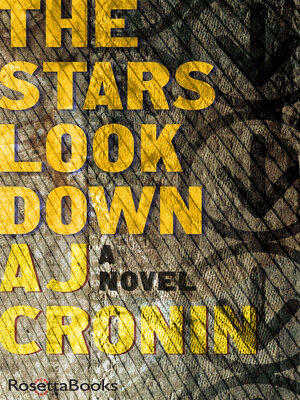
Sign up to save your library
With an OverDrive account, you can save your favorite libraries for at-a-glance information about availability. Find out more about OverDrive accounts.
Find this title in Libby, the library reading app by OverDrive.



Search for a digital library with this title
Title found at these libraries:
| Library Name | Distance |
|---|---|
| Loading... |
This thought-provoking novel of the challenges a coal mining community faces in the early twentieth century is “the finest work Cronin has given his public” (Kirkus Reviews).
First published in 1935, The Stars Look Down tells the story of a North Country mining town as its inhabitants make their way through social and political upheaval. Digging into workers’ rights, social change, and the relationship between labor and capitalism, the struggles of the novel’s trifecta of protagonists—politically minded miner David Fenwick, ambitious drifter Joe Gowlan, and frustrated yet meek mining-baron’s son Arthur Barras—remain compelling and relevant to readers in the twenty-first century.
AJ Cronin’s tale is one of many of the hardships of coal-mining communities during the industrial pre-war, World War I, and interwar periods in Britain, but stands out for its unflinching prose, universal themes, and keen storytelling. The novel was adapted into a 1940 film starring Michael Redgrave as Davey Fenwick, is a New York Times Critics’ Pick, and is included in the New York Times Guide to the Best 1,000 Movies Ever Made.
First published in 1935, The Stars Look Down tells the story of a North Country mining town as its inhabitants make their way through social and political upheaval. Digging into workers’ rights, social change, and the relationship between labor and capitalism, the struggles of the novel’s trifecta of protagonists—politically minded miner David Fenwick, ambitious drifter Joe Gowlan, and frustrated yet meek mining-baron’s son Arthur Barras—remain compelling and relevant to readers in the twenty-first century.
AJ Cronin’s tale is one of many of the hardships of coal-mining communities during the industrial pre-war, World War I, and interwar periods in Britain, but stands out for its unflinching prose, universal themes, and keen storytelling. The novel was adapted into a 1940 film starring Michael Redgrave as Davey Fenwick, is a New York Times Critics’ Pick, and is included in the New York Times Guide to the Best 1,000 Movies Ever Made.







